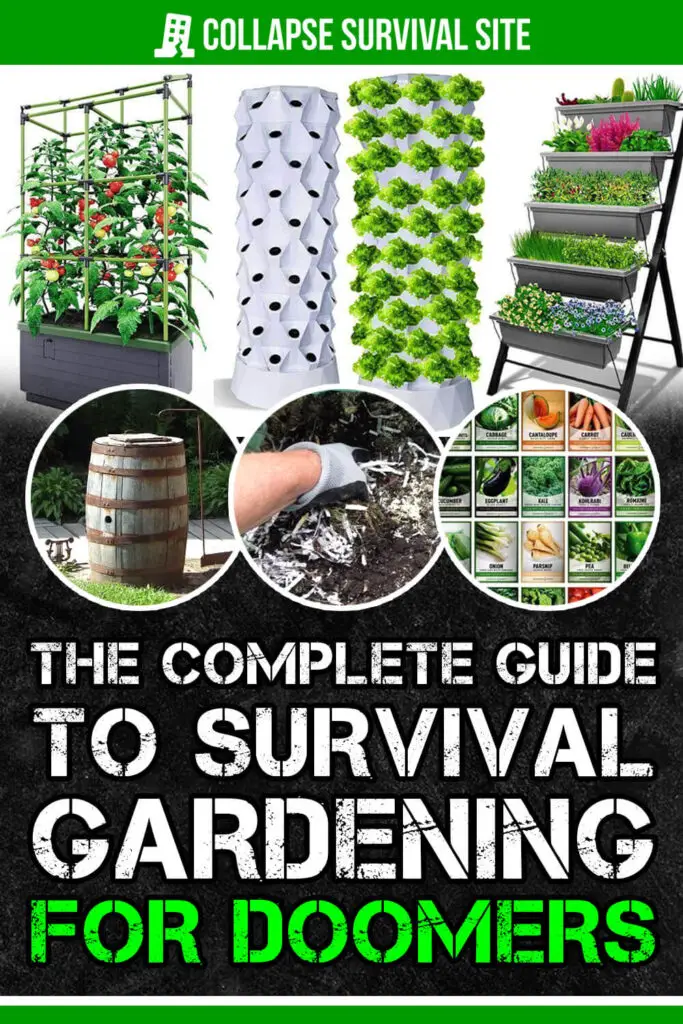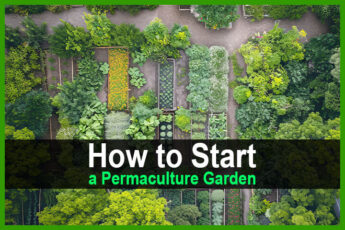Estimated reading time: 24 minutes
There’s a troubling video on YouTube that projects the immediate aftermath of a societal collapse related to our food supply and everything else we need to live. One of the main points that become apparent is that store shelves will be empty either as a result of panic buying or looting.
It’s been estimated that the average family has about a week’s worth of food. So after the collapse, the threat of malnutrition and starvation will be an immediate threat and could motivate even the most even-tempered individuals to loot for food. An obvious solution is to stockpile foods in a dedicated survival pantry, but stockpiles run out eventually.
A good solution for anyone is survival gardening, but as you might suspect, it also requires a bit of preparation, and the security of any outdoor garden will become a challenge. If people are looting stores for food, there’s little to stop them from raiding a backyard garden.
There Are Solutions
There’s a range of possibilities for survival gardening, from dedicated raised beds to square foot gardens and indoor gardens that can grow all year. There are even ways to grow vegetables in straw bales or potato towers. Which approach you choose to take depends on your location and the size of your yard or home.
Want to save this post for later? Click it On Pin It On Pinterest
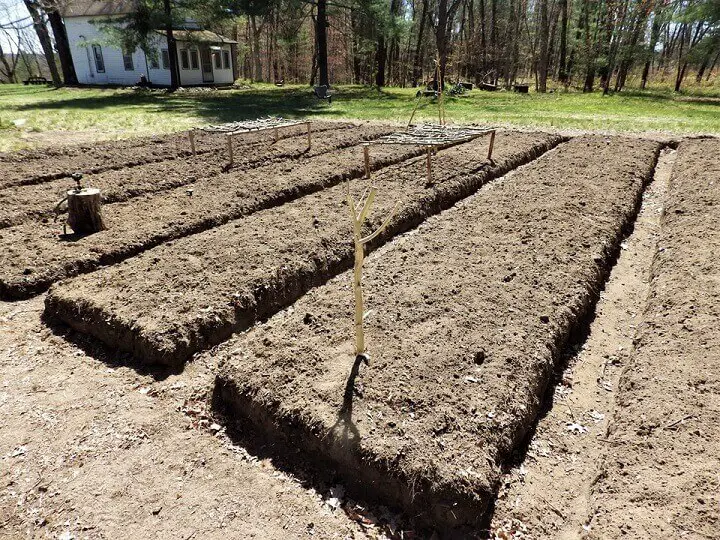
We’ll also cover the tools, equipment, seeds, and ways to maximize yields. In addition, we’ll identify the vegetables and fruits offering the best nutrient density, calories, and hardiness. Finally, we’ll cover some basics for protecting your crops from pests, disease and looters in the day or night.
- Garden Types to Consider
- Best Vegetables and Fruits to Grow
- Best Fruits and Vegetables for a Survival Garden
- Garden Tools and Equipment
- Garden Support Setups
- Planning Before You Plant
- A Word About Food Preservation
- Adding Wild Foraging to the Equation
- Defending Your Garden
- The Human Element
- Your Garden as Barter
- It’s All About Sustainability
Garden Types to Consider
Large Outdoor Gardens
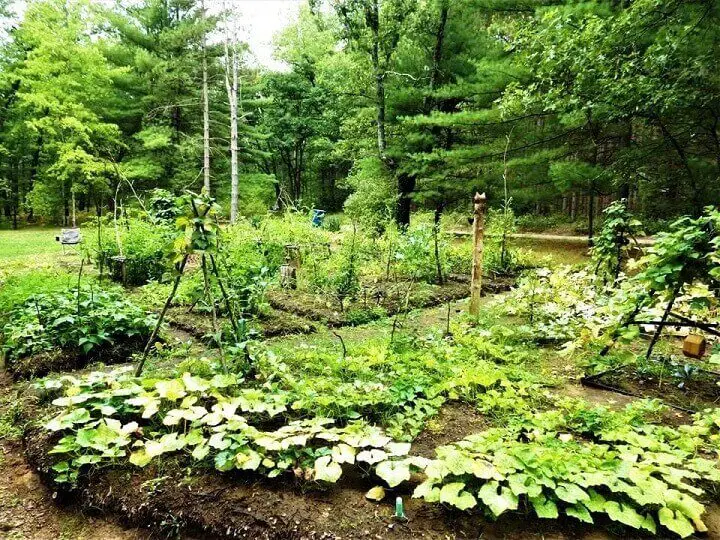
If you have the acreage, you can plant a large garden. This will give you the opportunity to plant a variety of crops. The benefit is that you can plant a diversified combination of vegetables and even plant a few fruit trees.
The key is to keep the garden close to your home. We tend to plant gardens in a corner of the yard, but when times are desperate, it’s best to plant close to your house to at least intimidate anyone tempted to poach a melon. Ideally, you have a fence around your yard at least 6 feet tall to deny prying eyes.
Raised Bed Gardens
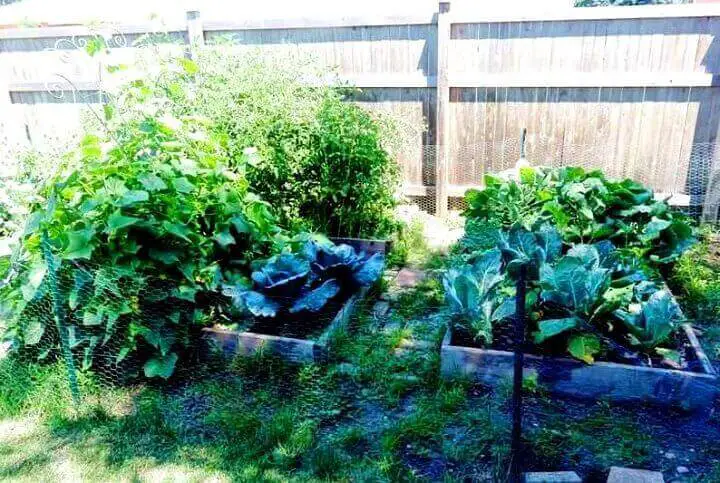
A raised bed garden can be planted anywhere in a yard, and the 8×2 supports allow you to fill it with a good mix of soil and compost to raise a healthy crop.
And a raised bed doesn’t have to be built on soil. You can build raised beds on concrete patios or decks if you don’t have a yard or want to enhance some level of security with plantings closer to your home.
From Flower Garden to Vegetable Garden
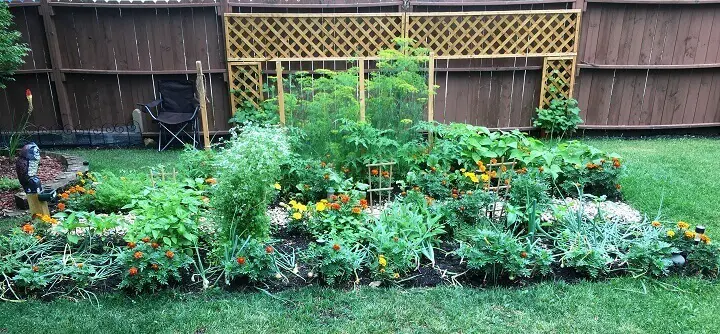
It’s time to give up on the roses and nasturtiums and chrysanthemums. Every area where something can grow should be dedicated to something you can eat.
At a minimum, the plant should have medicinal value, but when garden space is as scarce as food, it’s you'll want to make the most of what you have. On a brighter note, most vegetables and fruits flower at some point in their lifecycle, so you’ll still have some flowers and the fruits and vegetables that result.
Herb Gardens
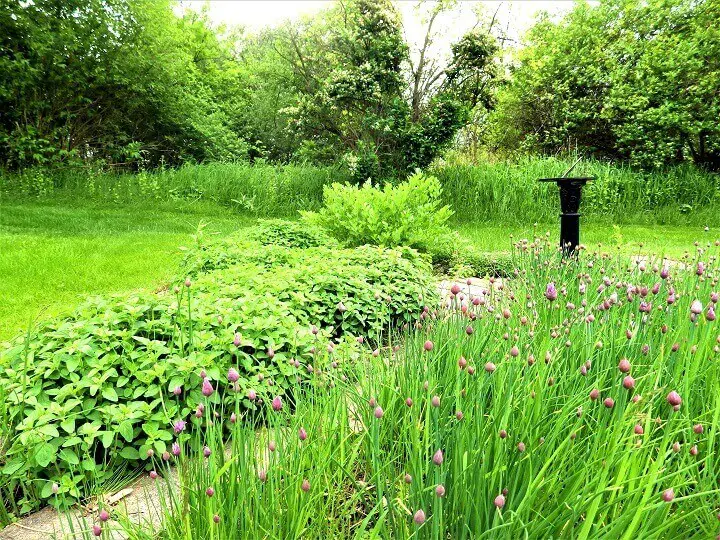
Herbs offer flavor enhancements to meals, and many have medicinal value. Better yet, many herbs are perennial including rosemary, oregano, lemon balm, thyme, tarragon and others.
Seeds will always be a challenge, but perennials come back year after year without complaint. There are also vegetables that are perennials including asparagus, Jerusalem artichoke, and others that can offer a steady crop every season.
Potted Plants in the Yard
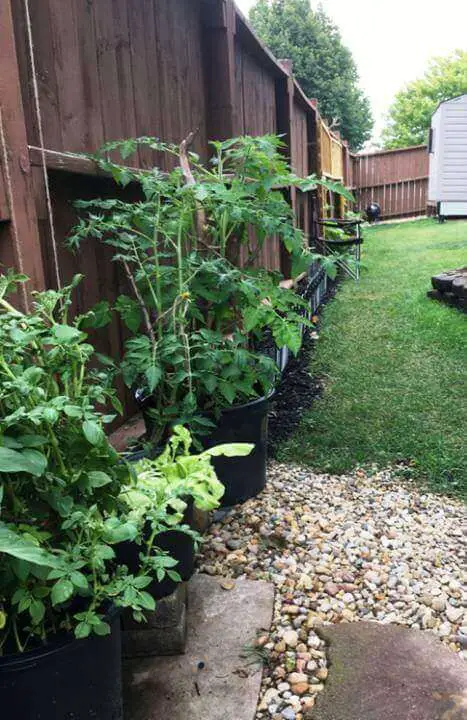
The value of potted plants is that they can be taken indoors when the weather turns cold, and they can be located anywhere in your yard, deck, or patio. Potted plants also give you the option to place them in locations that are stealthy and out of sight.
Most vegetables will grow in pots, although some vining vegetables may struggle a bit like cucumbers, butternut squash, and any melons.
Outdoor/Indoor Tray Gardens

Tray gardens can work for root vegetables like radishes, turnips, beets, green leafy vegetables, herbs, onions, garlic, and some dwarf varieties of peppers. It has the same advantage you find with potted plants in that you can bring them indoors in winter and continue to succession plant all year long.
Vertical Gardening
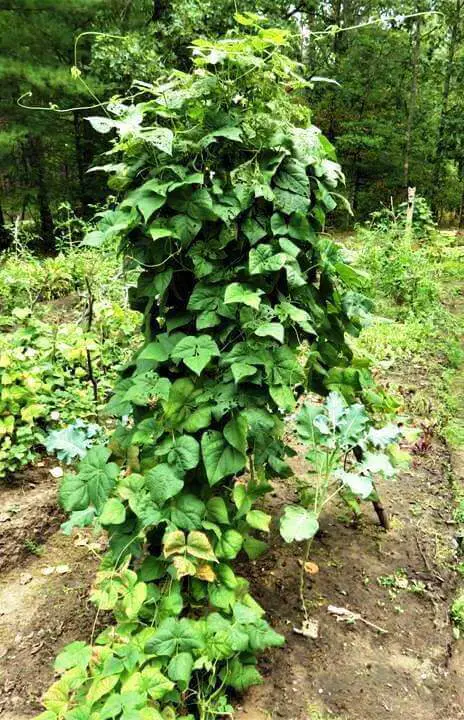
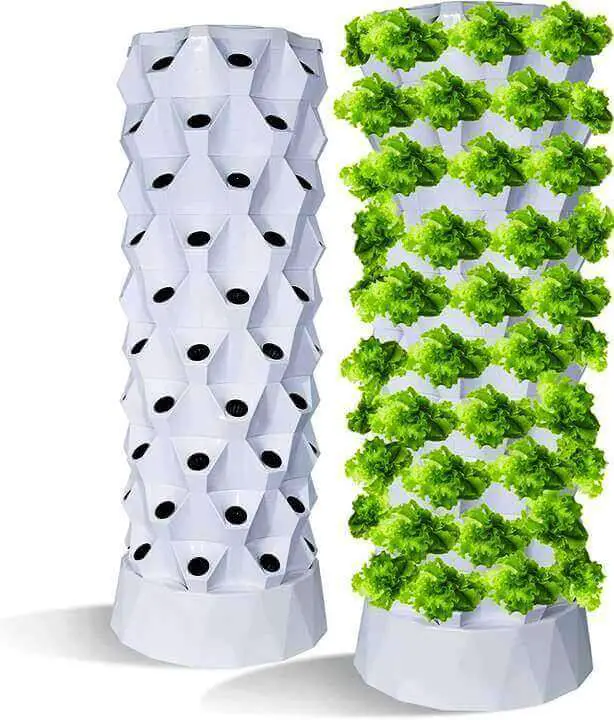
When space is limited, grow up. Literally. Many plants like pole beans, grapes, and other vining plants take up less space on the ground if grown on stakes or trellises. Another option is a long tube with various holes up its length that allow you to plant a variety of vegetables as a tower garden.
A more ambitious variation is a potato tower that can let you grow as many potatoes as 50 square feet of ground in a tower that occupies 6 square feet.
Urban Deck and Balcony Gardens
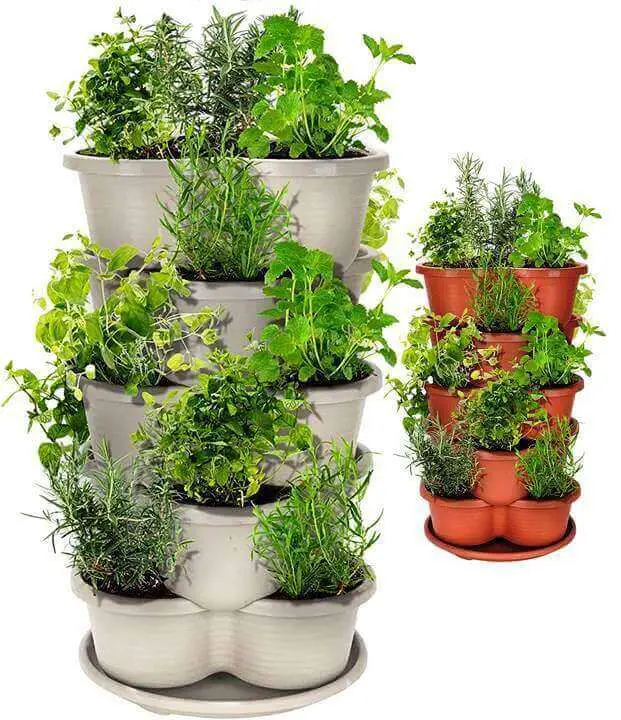
Many people who live in the city don’t have the luxury of a yard. However, some have a deck or balcony. There are pot designs that allow you to plant multiple vegetable and herb varieties in a vertical tower.
You can even grow vegetables in hanging planters. The amount of vegetables is limited by the available space, but it’s one of the most secure solutions for pests and garden thieves.
Indoor Gardens
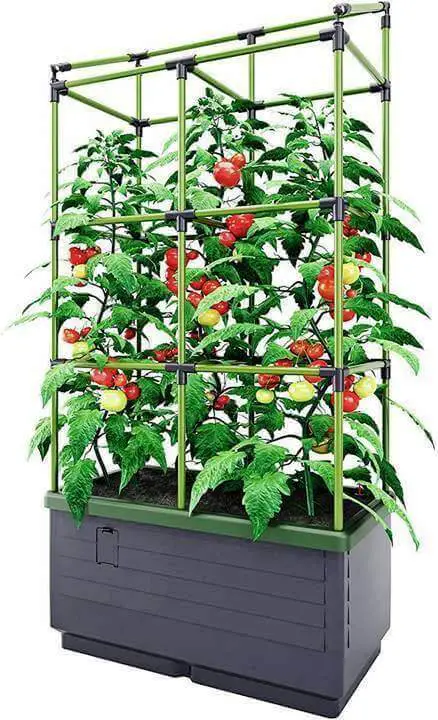
Indoor gardens offer one of the most secure solutions for survival gardening and can allow you to raise fruits and vegetables all year-round. The biggest challenge is light, but any window that allows sunlight to enter should be used to its best advantage.
There are also artificial lights that can provide light to plants, but the typical recommendation is that any indoor plants without access to window light get 12 hours of exposure to a grow light. That’s not so easy if the grid is down, although anyone with alternative power-generating capability might be able to manage it.
Hydroponic Gardening

The value of hydroponic gardening is that no soil is required. The plants grow in a rich mix of water and dissolved fertilizer. Miracle-Gro is a good example. Hydroponic gardening is also a compact garden solution and can not only give you a healthy indoor garden, but you can build the hydroponic setup yourself.
Best Vegetables and Fruits to Grow
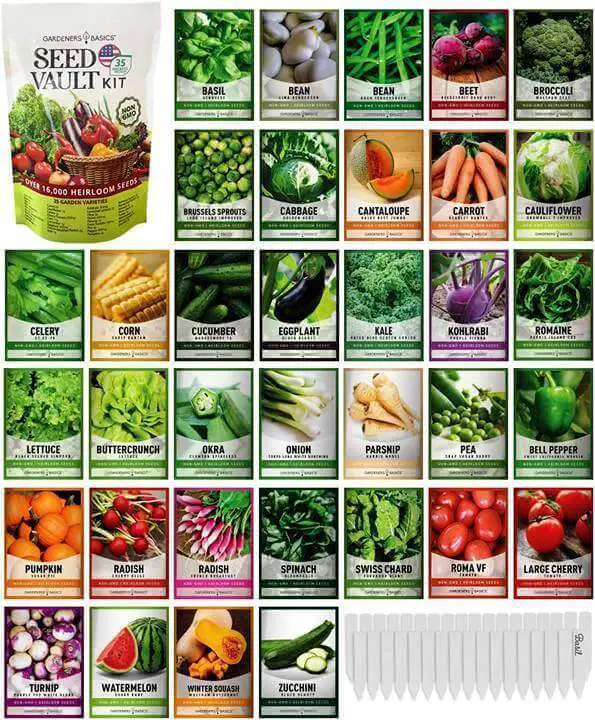
There are a few considerations to keep in mind as you think about what to plant. We’ll go through a chart of the best vegetables and fruits to plant, highlighting their strengths. In the meantime, here are some opening thoughts on plant selection.
- A lot depends on the amount of space you have for gardening and the type of garden you are growing. Vining squash plants like spaghetti squash, zucchini, and cucumbers can easily grow in a large garden space but may struggle or simply not survive if grown in a pot or indoors.
- Heirloom vegetables are the best, mostly because they allow for effective seed harvesting with better germination rates and will be true to the variety planted as opposed to unknown variations that emerge from hybrid seeds.
- Nutrient density is a critical success factor. Every inch of space in your garden is precious, and it helps to get the most nutrition from each variety you plant.
- Calories are another consideration. On average, green leafy vegetables total 25 calories per cup. On the other hand, beets and carrots increase the calorie count from 50 to 60 calories per cup. Nutrition is important, but calories are an equal part of the equation.
- Protein is another important consideration. We usually associate protein with meats and seafood, but legumes like peas and beans have significant amounts of protein and in time may be the primary source of protein. Legumes are the standard protein source for people living on a vegan diet.
- Plant food requirements are worth thinking about. Some vegetables like tomatoes are heavy feeders while beans and peas actually return nitrogen to the soil. Fertilizers are already getting expensive and in short supply, and that definitely won’t improve after the collapse of civilization. We’ll also cover some improvised approaches to making fertilizer like vermiculture.
- Watering requirements are another consideration. In a worst case scenario, the grid will be down and there will be no running water. Rainwater is the standard go-to water source, but droughts continue to dominate weather patterns. More to the point, your priority will be for drinking water. As a result, you may want to think twice about planting melons or squash that have high water requirements as the vines begin to fruit. Remember too that you can use grey water (previously used water like dishwater) for watering a garden and in most instances any collected water for the garden doesn’t need to be purified unless it is severely polluted.
- Maturity rates are also worth thinking about. Radishes and beets mature quickly while peppers and tomatoes take time. Fast maturing vegetables also allow for succession planting, giving you more than one crop in a season and can deliver food from garden to table faster.
- Companion planting is an important concept to understand. Some vegetables like tomatoes and onions grow better when planted next to each other. The real advantage is that you can plant the onions underneath the tomatoes so they are sharing the same soil and space while providing you with twice the benefit. Peas and beans are another excellent vegetable to interplant with other vegetables due to the amount of nitrogen that beans and peas return to the soil.
- Miniature or dwarf varieties are also worth considering, particularly for small containers or indoor gardening. It all depends on how much space you have in your containers or indoors, but you can even grow a dwarf fruit tree.
Best Fruits and Vegetables for a Survival Garden
The Complete Guide to Survival Gardening for Doomers - Best Fruits and Veggies
| Vegetable | Maturity* | Calories per Cup | Nutrition | Best Garden Location | Notes |
| Acorn Squash | 90 days | 55 | Vitamin A, C, B1, B6, B9, iron, magnesium, potassium, manganese | Outdoors | The most nutritious squash |
| Beets | 65 days | 60 | Fiber, protein, calcium, iron, thiamine | Anywhere | Leaves have as much nutrition as the root |
| Brussels Sprouts | 90 days | 40 | Potassium, protein, vitamin C, B6, iron, magnesium, calcium | Anywhere | Very tolerant of cold temperatures |
| Bush Beans | 60 days | 30 | Vitamin C, A, K, B9. Beta-carotene, potassium, protein | Anywhere | Another good companion plant sharing space |
| Carrots | 85 days | 50 | Carotene, lycopene, vitamin A, C, K, zinc | Anywhere | Require at least a 12-inch soil depth |
| Cucumbers | 60 days | 15 | Potassium, calcium, magnesium, phosphorous, carotene, vitamin A | Outdoors | Require space and plenty of water |
| Fruit Trees | Years | Varies | Varies | Outdoors | Slow to mature |
| Herbs | 60 days | 4 | Varies | Anywhere | Plant perennials |
| Honeydew Melon | 100 days | 65 | Vitamin C, B6, magnesium, potassium | Outdoors | The most nutritious melon |
| Kale | 75 days | 35 | Potassium, calcium, phosphorous magnesium, carotene, Vitamin A, C, K | Anywhere | Also tolerant of cold temperatures |
| Onions | 100 days | 45 | Potassium, fiber, vitamin C, B6 | Anywhere | Excellent companion planting choice |
| Peppers | 90 days | 20 | Vitamin C, A, fiber, protein | Outdoors or grown in pots indoors | Slow growing and many dwarf varieties |
| Pole Beans | 60 days | 30 | Vitamin C, A, K, B9. Beta-carotene, potassium, protein | Anywhere | Can be grown vertically anywhere |
| Radishes | 35 days | 20 | Potassium, fiber, vitamin C, B6, magnesium | Anywhere | Excellent for succession planting |
| Snap Peas | 70 days | 40 | Vitamin C, A, iron, calcium | Anywhere | Easy to grow indoors or out |
| Soybeans | 45 days | 190 | Protein, iron, Vitamin C, K, calcium, potassium | Anywhere | The protein powerhouse |
| Sweet Potatoes | 125 days | 115 | Vitamin A, C, potassium, iron, calcium | Outdoors in a garden or in a potato tower | Another must have vegetable |
| Tomatoes | 80 days | 25 | Potassium, vitamin A, C, lycopene, calcium | Outdoors or grown vertically in pots indoors | Heavy feeders |
| Turnips | 60 days | 35 | Potassium, fiber, vitamin C, B6, magnesium | Anywhere | Leaves also high in nutrition |
| White Potatoes | 110 days | 115 | Potassium, carotene, selenium, Vitamin A, C, magnesium | Outdoors in a garden or in a potato tower | A must have vegetable in a survival garden |
*Maturation dates are a general estimate across varieties and dependent on growing conditions.
All of the vegetables we’ve covered are only a representative sample of what could work best in a survival garden. A lot depends on your location, local weather, and your personal tastes. Just keep an eye on nutrition so you get the best yield for your precious garden space.
Garden Tools and Equipment
This doesn’t have to get complicated, and all garden tools and equipment should be hand tools as opposed to power tools requiring electricity or gas.
The size of the tools are proportional to the size of your garden. If you’re planting an acre you’ll need larger tools than if you’re planting in 5-gallon buckets on a balcony although you may need those smaller tools regardless of the size of your garden.
Here’s the basic list:
Tools
- Round point digging shovel
- Flat-edge grading shovel
- Pick
- Spade
- Spading fork
- Grass rake
- Leaf rake
- Hand shovel
- Pruning shears
- Weeding fork
- Watering can
- Plant stakes and twine
Garden Support Setups
Rainwater Collection and Distribution Setup
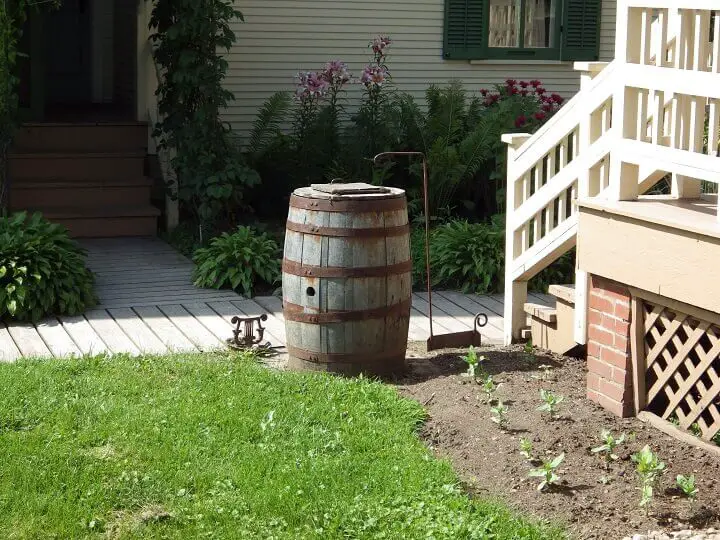
There are a variety of ways to setup a rain water collection system. Most involve collecting the rain water from rooftops in barrels. Some have pipes, valves, and faucets that can automatically or manually allow a garden or area to be watered. At a time when the water is not running, it may be the best option for watering your garden.
Compost Heap

A compost heap is easy to se tup and any brush, leaves, or kitchen scraps will decompose to provide a rich loam for any garden. At a time when buying fertilizer may be difficult if not impossible, it’s a simple and necessary addition to every garden.
Vermicomposting Setup

Vermicomposting, also known as vermiculture, involves the use of redworms in a compost bin to break down organic matter resulting in worm castings from the digested compost.
It’s one of the richest forms of fertilizer and is an excellent way to provide compost, especially for indoor gardens. Just as important, vermicomposting can be done indoors as well.
Buckets or Barrels for Soil Storage
The ability to store soil and compost for later use makes it easier to setup a new indoor garden or to fortify an existing garden. At a time when buying a bag of topsoil or potting soil may be impossible, it’s an important backup.
Extra Planting Pots, Containers and Buckets
Collect and save every pot, container or bucket you can to expand your gardening efforts.
Planning Before You Plant
If you’re thinking ahead, you’ve already planned and planted your garden. If a sudden collapse of society catches you by surprise, it at least makes some sense to have a plan for how you might grow your own food.

Seeds are the most critical consideration beyond available space to plant something, but tools can be improvised. There are many YouTube videos of a couple of guys building exotic structures and homes using only their hands and sticks. If you don’t have the tools, improvise.
Here are some basic things to think about as you plan a potential range or variety of survival gardens:
- What is the level of risk for your gardens from animal pests, thieves, weather extremes, or other factors? This will affect where you locate your garden(s) and what you plant.
- What is your water situation? Do you live next to or close to a lake, pond, river, or creek, or will you be totally dependent on rainwater? This could determine if you plant drought-tolerant vegetables.
- How many people are you feeding? This will give you a real-world idea of how much you need to plant and how ambitious you need to be with garden types and variations if you are totally dependent on what you can grow.
A Word About Food Preservation
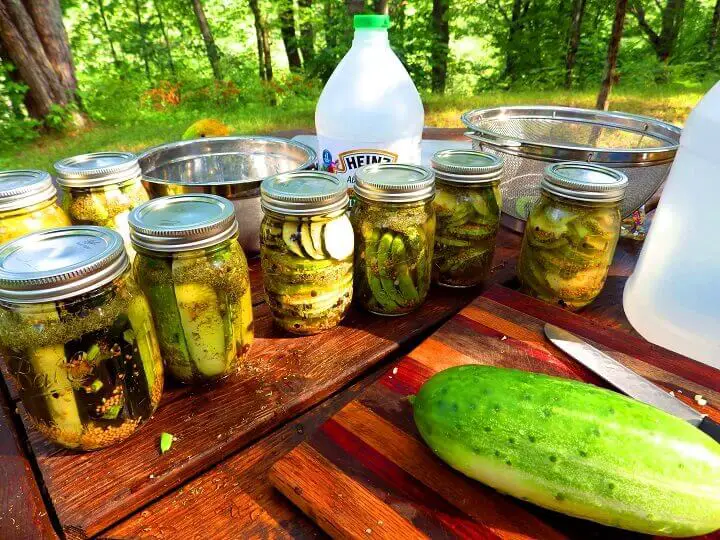
In a perfect world, you would eat the fresh fruits and vegetables from your garden as you need them. When words like “collapse” are being mentioned, we’re far from a perfect world. You’ll eventually have to think about storing and preserving what you grow, and you may need to do it quickly.
Here are some basic considerations:
Root Cellaring

People have been storing fruits and vegetables in root cellars for centuries, and at a time when refrigeration may be a challenge without power, a root cellar is an excellent solution. There are also variations on a root cellar that could include a cool room in a basement or even a metal box buried in the ground.
The best approach for storing vegetables in a root cellar is to not wash them but to store them with the residual dirt still on the roots. When it’s time to use them, give them a rinse. A root cellar not only keeps whole fruits and vegetables, it's also an excellent storage option for canned foods.
Water Bath Canning
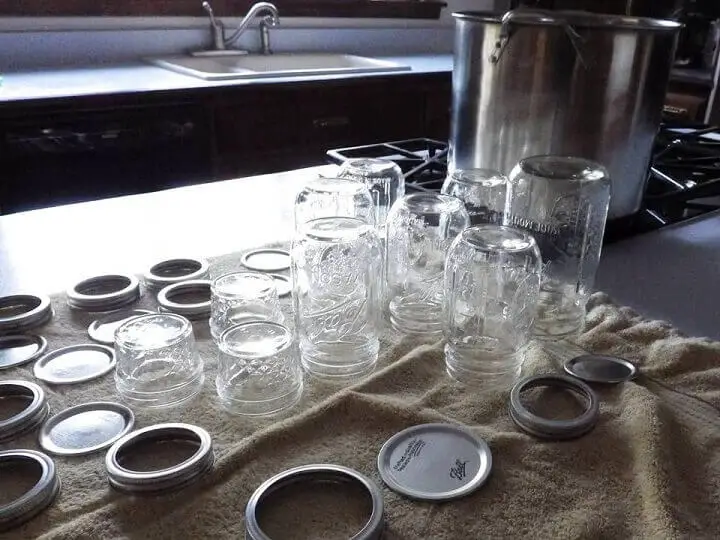
Water bath canning is a food preservation technique typically used for foods that are highly acidic with a low pH or are canned with the addition of an acidic liquid like vinegar. The canned or jarred foods are boiled underwater at 212 degrees F. for 15 to 25 minutes and are then ready for storage.
Pressure Canning
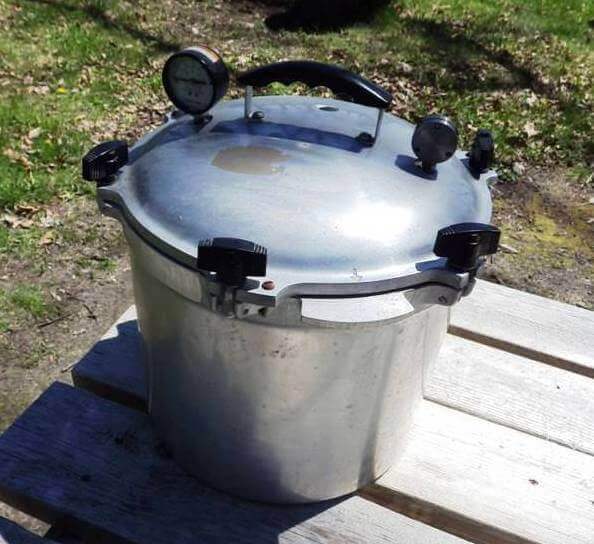
Pressure canning is used for goods with an alkaline or high pH like meats, seafood, beans and food combinations. The temperature in the pressure cooker can get up to 290 degrees F, and the cans or jars are processed for 20 to 40 minutes before storing.
Fermentation
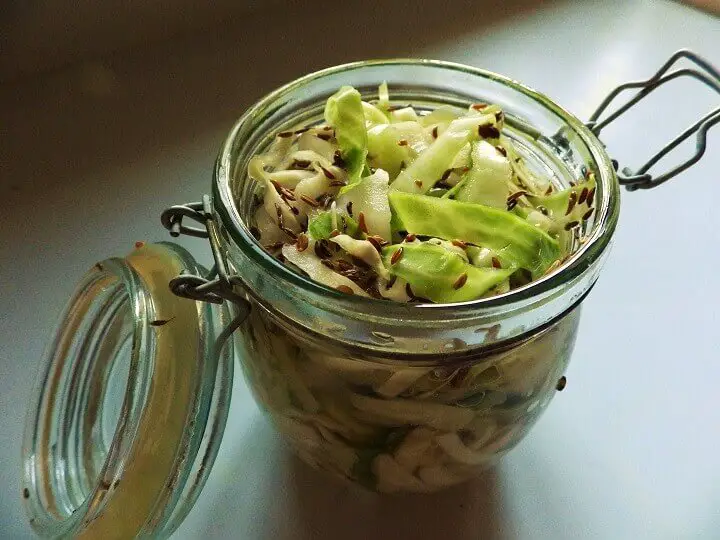
Fermentation is an ancient technique that allows “good” bacteria to essentially cause foods to rot in a very controlled way. Examples of fermented foods include sauerkraut, Kim Chee, certain pickling recipes plus beer, wines, and spirits. The fermentation process kills off the bad bacteria, preserving the foods for storage.
Dehydration
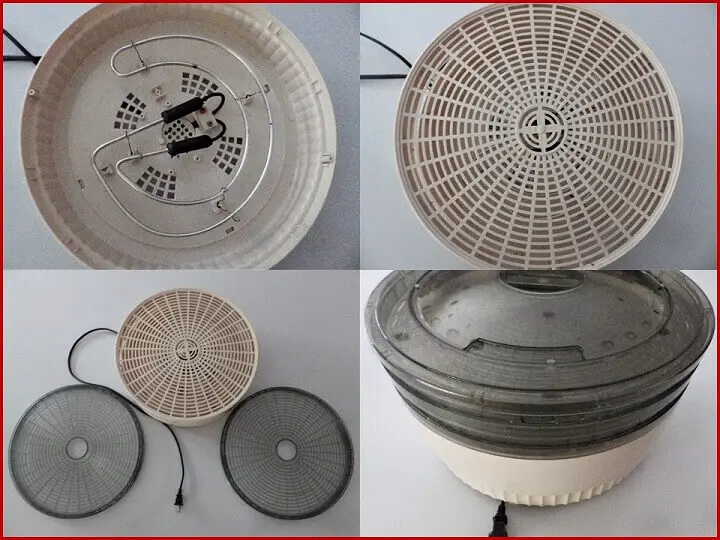
Dehydration is another ancient technique that was initially accomplished by drying foods in the sun, which could be our only option if the grid is down. Most people today use an electric fan-powered dehydrator that can dehydrate fruits, vegetables, and herbs for storage.
Adding Wild Foraging to the Equation
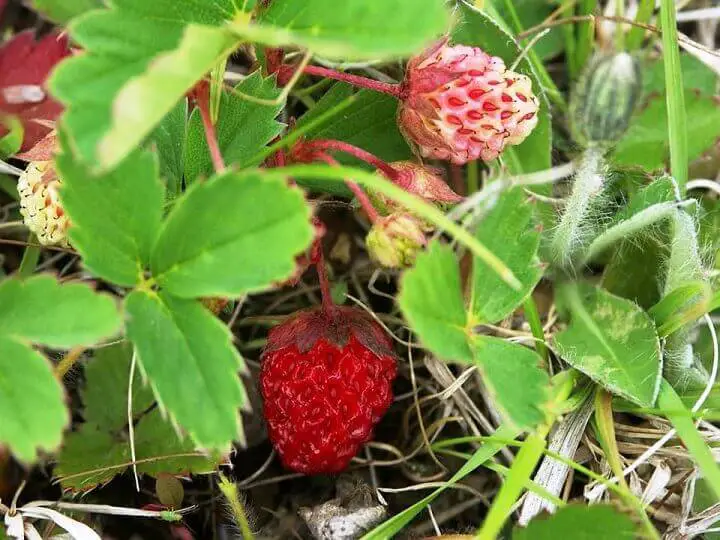
If you don’t have a stockpile of foods on hand and are waiting for your garden to produce its first fruits, you are not without options in a collapsed society. If it’s safe to venture out, there are wild plants that you can forage both in the wilderness and even in the city and your own backyard. There are even foraging options in winter.
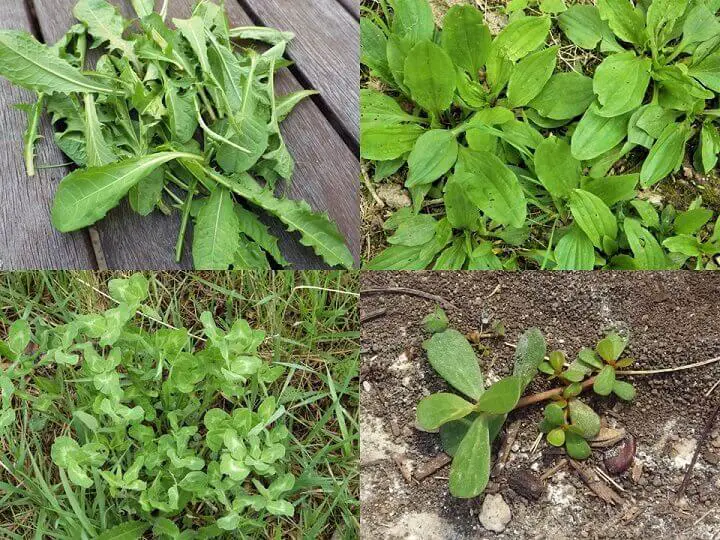
Many common weeds like dandelion, plantain, clover, and purslane have nutrient profiles on a par with spinach and kale. Something to consider is to not only harvest the wild plants but harvest the seeds as well. Most edible wild plants are indigenous to an area and may grow better than any seeds you buy or store.
And don’t forget to forage the nuts.

This includes acorns, walnuts, chestnuts, and pine nuts. They are very high in calories, have excellent nutrient density, and some of them are outstanding sources of protein. All require a bit of home-processing, but at a time when food is scarce, it’ll be worth the effort.
Other wild foraging possibilities include the variety of plants that can be ground into flour.
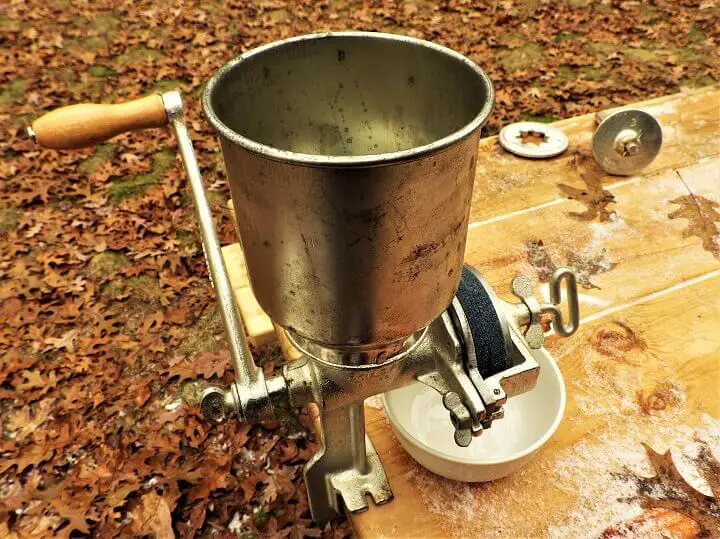
You can forage them or grow them, although farmed seeds and grains that are ground into flour typically require a lot of space. There’s already a flour shortage due to the Ukraine/Russia war, but flour made from nuts and seeds can make bread, biscuits, pancakes, waffles and just about anything else you would make and bake with flour.
Cooking and baking without power will always be a question in dire times, but there are many ways to improvise solutions for cooking and baking various foods off-grid.
Hunting and fishing is also a possible way to wild forage, but we’re going to stick to fruits and vegetables for now.
Defending Your Garden
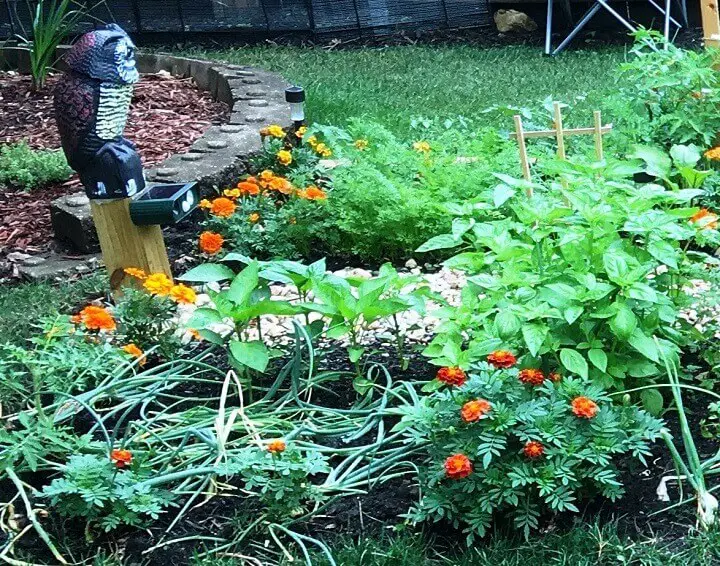
We’re going to start simply with pests like insects, rodents and rabbits. Then we’ll get into how to protect your garden from poaching, looting and general vandalism.
Pests

There are a lot of benefits to planting heirloom varieties, but unlike some hybrids and genetically modified (GMO) plants, they can succumb to insects.
- Aphids are one threat and Chinese Beetles another.
- Tomato worms often arrive unexpectedly with their finger-fat green bodies and sharp red horn emerging from their head. The best approach is probably to be vigilant and pick off the insect pest by hand. Crush them like a bug.
- Aphids are a little more complicated given their size, but a spray of soapy water or diluted hot sauce of water and cayenne pepper will discourage them.
The bigger threat comes from the bigger pests like rabbits, raccoons, mice and voles and moles, even deer if you live remotely.

One simple solution is to hang a shiny piece of foil on a string or allow it to spin on a stake in the wind. The motion will often repel them.
Some people setup a wooden or plastic owl to scare off smaller animals.

Sometimes they work, sometimes they don’t.
Some plants like onions, garlic, and even marigolds have been known to repel animals, but if they’re hungry enough, they’ll blow right by them.
There are more exotic solutions like solar-powered motion detectors that set off all kinds of alarms.
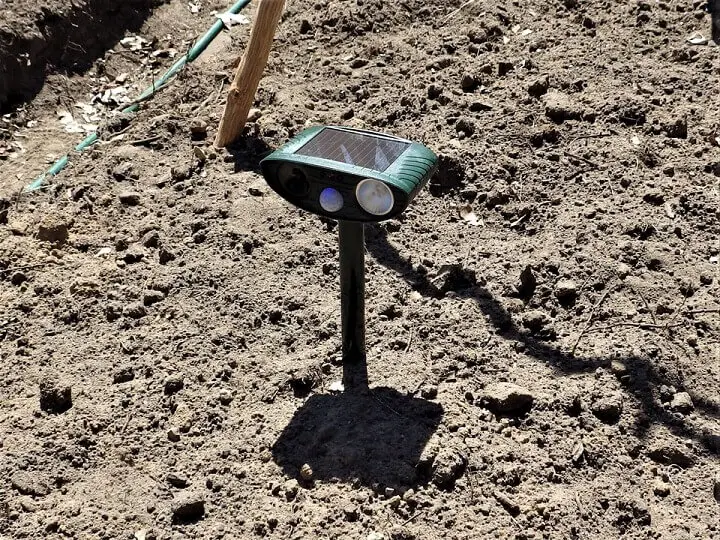
They seem to work pretty well and can even scare off an intruder trying to steal from your garden. Then again, they may steal the motion detector as well.
The Human Element
Preppers have a standard rule. Don’t tell anyone you’re a prepper. It can make you a target when times get desperate. But a garden in the backyard is different. It’s hard to hide a garden. It helps if you have a fence that blocks the view of your yard and garden from the street, but fences can be climbed.
One thought is to plant your garden or raised beds close to your home. A garden in a distant corner of a yard (where we usually plant vegetables) is an easy target. People are sometimes less inclined to get close to a home, although the middle of the night and very early morning are primetimes for theft.
Here’s where that solar motion detector could come in handy, although a desperate person may simply smash it, grab what they want, and move on.
To some degree, desperate garden looters may be the best reason to plant your garden on a deck, balcony, or indoors. If they’re in the house, you have bigger problems than losing a few tomatoes.
Firearms are often touted as a solution, especially for a home break-in, but do you really want to shoot a desperate mom taking a cantaloupe from your garden?
If you’re blessed with plenty of acreage or are an ambitious indoor gardener, you could always share, trade, or barter with your neighbors. In fact, it’s best to never give anything away. Make it a trade in some way or people will always assume they can just show up for your charity.
Your Garden as Barter
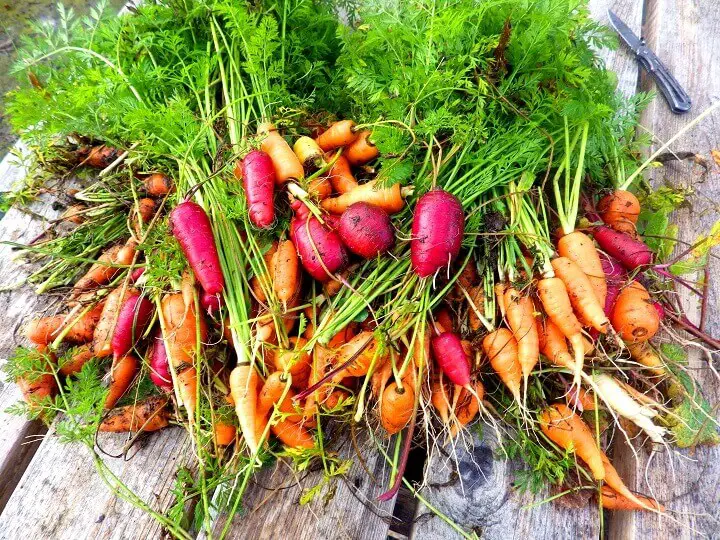
In a time when the internet is down as well as the grid and most everything else, all commerce will devolve to a barter economy. Local farmers markets will no doubt emerge with a bit of flea market on the side, and your homegrown fruits and vegetables will be valuable barter items.
The fruits and vegetables with the most value in a barter economy include:
- Beets
- Broccoli
- Carrots
- Cauliflower
- Herbs
- Melons
- Onions
- Peppers
- Potatoes
- Tomatoes
A lot depends on your neighborhood and the local culture, but if you think about what you are used to buying in the produce section at a grocery store, that’s what people will tend to gravitate towards… at least in the short-term.
As time goes on and you harvest your seeds, it makes sense to share the seeds and your gardening practices with your neighbors. The more sustainable you can make those around you, the less likely they will come begging for help. In fact, you can even develop a cooperative planting strategy with mutual sharing across varieties to sustain the strength and support of those around you.
Water and food often emerge as the most valuable commodities in a barter economy, and if you can grow your own, you’ve got a good head start.
It’s All About Sustainability
Even if you haven’t stockpiled a thing, a garden can offer you something that stockpiling can’t match: a sustainable way to replenish your food supplies again and again. How well your home gardens can provide you with sufficient nutrition depends on the size of your gardens, the size of your family or group, and a bit of luck.
Like this post? Don't Forget to Pin It On Pinterest!

